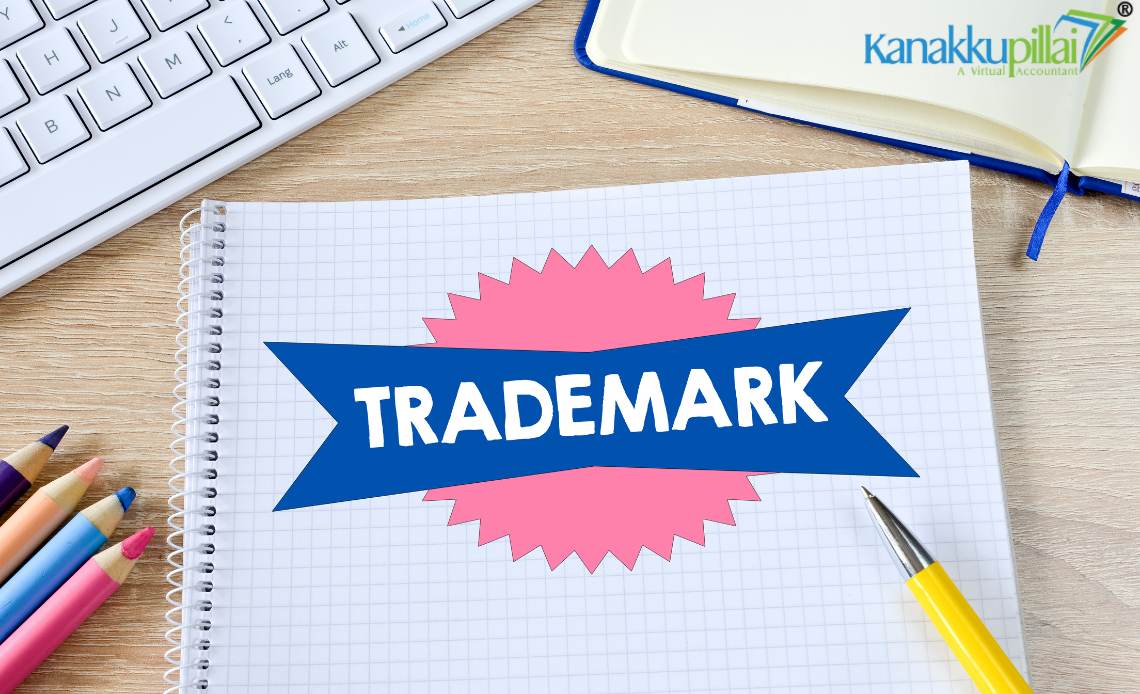A trademark is a unique identifier for terms, symbols, logos, and phrases used by an organisation to identify its own goods or services from those of others. The very nature of a trademark with distinctiveness allows consumers to distinguish between the origin and quality of a specific product or service in the market. On the other hand, trademarks also increase the value of the brand by enhancing its good name, fostering customer loyalty, and offering success in marketing.
A trademark refers to a unique identifier that an organisation defines, such as terms, symbols, logos, and phrases used to distinguish its goods or services from those of other organisations. The context of the first nature of that label, with its distinctiveness, allows consumers to distinguish between the origin and the quality of the goods and services a particular product or service has in the market. On the other hand, trademarks increase the value of brand identity by increasing the goodwill, building the loyalty of customers, and creating marketing success in addition to it. Trademarks basically exist to prevent possible mixing up by consumers and hence empower consumers to identify brands with informed choice. In itself, a trademark is a business asset of intellectual property that can be franchised, licensed, and even sold. Trademarks are also a vital aspect in the advertising and promotion of brands and tend to be synonymous with the company.
They are recognized and protected under the law and can even be registered with the competent authorities, thus conferring some proprietary rights on the owner. Legal remedies are available against unauthorised usage and infringement by third parties through registration. In a highly competitive and globalized marketplace, it has become extremely essential to have a unique trademark that can be protected under law to distinguish the brand and make it commercially viable. Hence, trademarks not only represent symbols, but also represent assets of considerable economic value.
What is Trademark Opposition?
When a third party opposes a party to a trademark registration, it is called a trademark opposition, which occurs after the trademark is accepted and published by the registry but before it is formally registered. After acceptance of a trademark application, the application is published in the Trademark Journal, which takes effect as a legal notice. The notice begins the statutory period allowing anyone opposing registration of the trademark to file a notice of opposition, which usually is between three and four months in most jurisdictions. Various grounds can be cited for opposition, including the similarity of the opposed trademark to an existing or pending mark; the likely confusion with consumers; or distinctiveness grounds and mala fides application. The opposing party shall have the burden of proof and provide justification and offsetting evidence in favor of its assertions. Once an opposition is filed, an applicant may submit a counter-statement supporting its own application. The matter proceeds to the legal hearing, where each party may present its arguments and evidence. After that, the trademark registrar ultimately decides to either accept or reject the application for a trademark. Trademark opposition protects built-in rights from registration by marks that are likely to cause confusion, deception, or unfair competition.
Grounds for Trademark Opposition
Any natural or legal entity has the standing to file a trademark opposition before the Trademarks Registry when such natural or legal entity believes that the registration of a proposed trademark would be prejudicial to its interests or rights. This opposition must be established on sound legal grounds under relevant trademark legislation.
Trademark oppositions are one of the judicial protections that cover distinct, authorised, and non-deceptive trademarks. Hence, this was one of the concerns that the opposition would prevent confusion among the consumers, preserve pre-existing rights, and thereby promote fair competition in the market.
- Similar to an Existing Registered Mark: One of the leading causes is that the trademark applied for is the same or closely similar to an earlier registered or pending trademark. Where it is likely to confuse or mislead the public, the opposition will be bound to succeed.
- Likelihood of Confusion: Opposition can arise from a trademark registration, although the marks are not identical, in terms of their confusion in the hands of the customers, origin of goods or services, association with a particular existing entry, and the notion that they are connected or sponsored by the same entity.
- Trademark Devoid of Distinctiveness: A generic, descriptive, or common trademark is opposed on the grounds of non-distinctiveness and therefore inability to serve as a source identification mark.
- Bad Faith Application: If the application is made in bad faith, for example, to delay a competitor, to hijack goodwill, or to take advantage of a very well known brand, that is, if the application is made for such fraudulent intentions, the grounds of objection on bad faith will cover the allegation of filing the application in bad faith.
- Use is likely to Deceive or Mislead the Public: A trademark could be the object of the objection if it deceptively misrepresents the nature, quality, or origin of a product.
- Trademarks Violate the Law or Morality: A trademark can be attacked for public policy or as immoral when such a trademark consists of obscene, profane, or otherwise offensive words or images or otherwise unlawful words or images.
- Misrepresentation and Unfair Competition: Opposition can be commenced if the trademark of the applicant is likely to confuse consumers into thinking that the goods or services of one would be the other with the result of unfair competition or loss of goodwill.
- Similar to a Well-Known Trademark: A trademark application can be objected to on the ground that it is identical or almost identical to a well-known trademark, regardless of whether or not the goods or services were similar, as per the dilution principle, which protects well-known trademarks from being diluted.
- Misleading Geographic Indication: A trademark deceptively indicates an association with a geographical indication (GI) that is protected and may be challenged.
- Infringement of Copyright or Breach of Existing Rights: If a trademark consists of copyrighted photographs, designs, etc., or other intellectual property created by the objecting party, then there is a solid ground on which it can be opposed.
Procedure for Filing a Trademark Opposition in India
The Indian trademark opposition procedure is a legal regime encompassing different time-bound processes, which are intended to ensure the registration of trademarks that are bona fide and are not capable of causing confusion with prior trademarks. The process gives the opportunity for the rights holders and the public to oppose trademark applications that may be considered unlawful or may mislead the public. The interested party must therefore keep track of the journal, ensuring timely filing with substantiated supporting evidence. The Trade Marks Act, 1999, and Trade Marks Rules, 2017, govern the trademark opposition process in the country. Any person claiming damage or infringement of their rights on account of a registration of the trademark may oppose such registration. The opposition must be within 4 months from the date of publication of the trademark in the Trademarks Journal.
1. Keep a Close Watch on the Trademark Journal Regularly
The Trademarks Journal is published weekly by the Indian Trademark Registry and contains trademarks accepted by the Registrar and open for opposition. Interested parties must regularly check the journal for possible trademark conflicts.
2. Filing a Notice for Trademark Opposition in Form TM-O
In the event that an individual identifies a trademark that seems to infringe upon his or her rights, the interested party may file a Notice of Opposition on Form TM-O, which must be prescribed by the proper Trademark Office such as Delhi, Mumbai, Chennai, Ahmedabad, and Kolkata, as the case may be. The following needs to be mentioned:
- Details linking the opponent, such as name, address, and contact information, are necessary.
- Information in relation to the trademark opposed, such as application number, class, mark, and name of applicant.
- Grounds for opposition.
- Legal facts and evidence regarding the issues.
According to the government, e-filing for opposition to each class shall cost Rs. 2,700 for individuals/startups and Rs. 3,000 for all others.
The notice has to be filed within four months of publication of the trademark in the gazette.
3. Service of Notice to Applicant
After an opposition is filed, the Trademark Registry sends a copy of the notice of opposition to the trademark applicant. This has to be done in a quick manner, however.
4. Filing of Counter-Statement by Applicant
The applicant for the trademark has a two-month period to file a counterstatement on Form TM-O responding to the grounds for opposition, which is a defense of their application.
The application would stand abandoned if the counterstatement is not made within that time limit.
5. The Evidence in Opposition
The other party opposing the claim must file an affidavit supporting its opposition to the counterstatement within two months of receiving it. Such a document will contain all relevant documents such as prior registered certificates, invoices, promotional materials, and any other supporting evidence.
Alternatively, the opponent may choose to rely on the fact as stated in the notice but not tender evidence.
6. Evidence in Support of Application
After the opponent submits his evidence, he then has a two-month period to put in his evidence in support of his application through a bundle of papers, company documents, and affidavits.
7. Evidence in the Reply of the Opponent (Optional )
The opponent is given one last shot at rebuttal evidence against the applicant’s evidence and must lodge it within one month.
8. Hearing
Once all documents and evidence have been filed, the Registrar arranges for a hearing. The hearing will be attended by both parties and their legal representatives.
Both parties shall argue their cases during the hearing and the Registrar will evaluate the complaint in the light of the facts, the evidence and the relevant law.
9. Decision by the Registrar
After hearing both parties, the Registrar will pass a definite order. The application will be refused if the objection is upheld. Otherwise, if the opposition does not succeed, registration will be granted along with the issuance of a certificate. This decision will be conveyed in writing to both parties.
10. Appeal (Optional)
In case of a discontentment with the Registrar’s decision by any of the parties, he has the option to file an appeal before the Intellectual Property Appellate Board (IPAB) or the relevant High Court within the prescribed time.
Conclusion
Trademark opposition effectively shields already existing brand rights and upholds commercial justice. Businesses, or even individuals, may conduct opposition on a trademark which will probably cause confusion or interfere with an already existing right, or one that is misleading or deceptive. The opposition mechanism allows for public scrutiny ahead of final registration so that only those trademarks that are legally protected and distinguishable are allowed to be considered. The criteria for successful opposition are narrow, time-bound windows based on sound erudition and documented properly. Thus, this process provides not only trademark protection and fair competition but also purports to secure clean and safe registrations.





